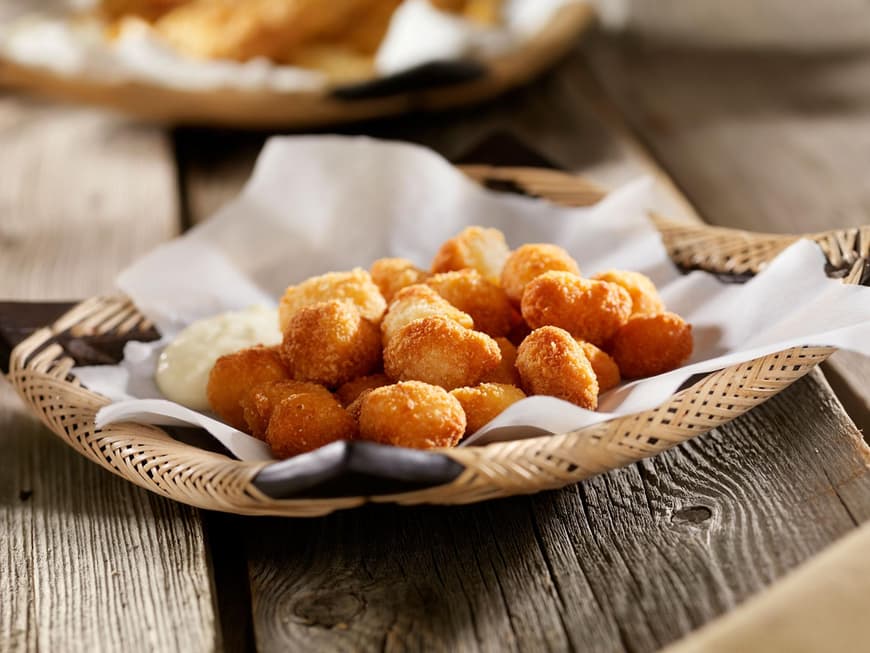Olive harvest and ripening process
Harvesting olives is purely manual work, at least when it comes to table olives. Surprisingly, they taste unpleasantly bitter when raw. They only develop their fine aroma through an elaborate maturing process in brine or through lactic acid fermentation. In the process, they lose many bitter substances and also become significantly softer. Herbs, garlic or chili provide additional spice.
Spicy and healthy
The popular fillings (e.g. cream cheese, almond kernels or bell pepper sticks) for snack olives are only added after they have matured. However, the stuffed varieties are rather unsuitable for cooking in stews with meat, fish and vegetables, for pasta sauces or as a pizza topping.
What all olives have in common is their high content of polyunsaturated fatty acids, which are good for the heart and blood vessels, and phytochemicals, which are said to protect against cancer.
The most popular olive varieties
Taggiasca From Liguria. Mildly fruity, with a fine almond and pine nut aroma. Great for pasta and for cooking with. Also make a fine oil.
Bérruguette or Aglandou From Provence. Fruity, for salads or as a snack. But is usually pressed into oil. Good alternative: Picholine.
Tapenade Paste made from black olives, capers and anchovies. For dips, fillings and sauces.
Arbequina Small Spanish olive with a subtle bitter note. Oils made from it taste slightly nutty. Great for stews with rabbit and poultry.
Bella di Cerignola From Apulia. Very large and firm-fleshed, without bitter notes. Perfect table olive.
Recognizing good olive oil
Over 90 percent of the world's olive harvest (around a quarter of which comes from Spain alone, although marketing is dominated by Italian companies) is pressed into oil. Ideally, this is single-variety and labeled "extra virgin" or "extra virgin olive oil". Be careful if it costs less than 10 euros/liter. Cheaper oils from the second and third pressing are usually added, which damages the quality and aroma.
Olive recipes
Deep-fried olives
(For 4 portions)
With 1 geh. Garlic clove, 75 g gr. Parmesan cheese, 1 tsp. basil, pepper and salt in a food processor. Cut open 250 g stoneless green olives and fill with them. Coat in flour, then in beaten egg. Coat in breadcrumbs and deep-fry in hot oil.
Olive focaccia
(For 1 tray)
Dissolve 20 g yeast in 220 ml warm water. Knead with 400 g flour, 1/2 tsp salt and 3 tbsp olive oil until smooth. Leave the dough to rise for 45 minutes. Roll out on a baking tray lined with baking paper, press in 100 g black olives. Top with rosemary, salt, 1-2 tbsp olive oil and bake at 220 degrees (electric) for approx. 30 mins.
Extra tips with olives
As olives only become edible when soaked in brine, they naturally pass on this seasoning when roasted or braised. Salt should be used sparingly. They harmonize perfectly with garlic and fresh herbs such as thyme, mint, basil and rosemary.
You might also be interested in this:
Spicy recipe: Olive and herb sticks
Turkish pizza with peppers & olives
The best tomato varieties: tips, tricks and ideas
Product information: All about potatoes
Mince pan with beans & olives
Chicken with olives & mushrooms
A little kitchen knowledge: Three cooking oils in a quality check



